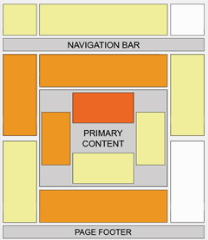hi all, blogger blogging platform by default give you the ability to add Labels for your post, so you can add and display your blog Labels at your sidebar.
but because we all want our blogs look great for our visitors, we need to give this labels good style,
So now, we’ll learn how to add amazing tag/labels cloud widget to our sidebar instate of the normal one that presented by blogger.
We’ll do it in few steps.
1. Log into your blogger account.
2. Go to dashboard >> layout >> Edit HTML
3. Find the next code
You can find it by clicking ctrl+f in your browser.
And past the next code just after the above code.
<b:widget id='Label99' locked='false' title='Labels' type='Label'> <b:includable id='main'> <b:if cond='data:title'> <h2><data:title/></h2> </b:if> <div class='widget-content'> <script src='http://halotemplates.s3.amazonaws.com/wp-cumulus-example/swfobject.js' type='text/javascript'/> <div id='flashcontent'></div> <script type='text/javascript'> var so = new SWFObject("http://halotemplates.s3.amazonaws.com/wp-cumulus-example/tagcloud.swf", "tagcloud", "240", "300", "7", "#ffffff"); // uncomment next line to enable transparency //so.addParam("wmode", "transparent"); so.addVariable("tcolor", "0x333333"); so.addVariable("mode", "tags"); so.addVariable("distr", "true"); so.addVariable("tspeed", "100"); so.addVariable("tagcloud", "<tags><b:loop values='data:labels' var='label'><a expr:href='data:label.url' style='12'><data:label.name/></a></b:loop></tags>"); so.addParam("allowScriptAccess", "always"); so.write("flashcontent"); </script> <b:include name='quickedit'/> </div> </b:includable> </b:widget>
4. Click save template and now check your Blog. And enjoy.
Hints.
- You can change it’s location at your side bar by going to dashboard >> layout
and move it up or down.
- You can change it’s location at your side bar by going to dashboard >> layout
and move it up or down.
- you can change the widget width and height by editing this part in the code.



















 Why below post title? Because it is the position with the highest CTR (click-through rate). In other words the ad placed there will bring the most money.
Why below post title? Because it is the position with the highest CTR (click-through rate). In other words the ad placed there will bring the most money. 
 The BlackBerry has long been a writer's and telecommuter's lifeline. It provides an email platform that is second to none, and an organizational system, including calendar and task lists, that match any other smartphone platform. Kids these days might be buying iPhones and Android smartphones, but for the professional the BlackBerry is still the gold standard. Its most attractive feature, the physical keyboard, can help you get out of the house and into the park, all while keeping up with your blogging.
The BlackBerry has long been a writer's and telecommuter's lifeline. It provides an email platform that is second to none, and an organizational system, including calendar and task lists, that match any other smartphone platform. Kids these days might be buying iPhones and Android smartphones, but for the professional the BlackBerry is still the gold standard. Its most attractive feature, the physical keyboard, can help you get out of the house and into the park, all while keeping up with your blogging. As mobile high speed internet connections become faster and more reliable, we can expect blogging to become more mobile as well. Typing out a full blog post including images and media on an iPhone used to be a chore. Nowadays, blogging from your iPhone is relatively painless and hassle-free with the use of a few handy applications from the iTunes Store. Here are 8 of the best blogging apps on the market today for the iPhone platform.
As mobile high speed internet connections become faster and more reliable, we can expect blogging to become more mobile as well. Typing out a full blog post including images and media on an iPhone used to be a chore. Nowadays, blogging from your iPhone is relatively painless and hassle-free with the use of a few handy applications from the iTunes Store. Here are 8 of the best blogging apps on the market today for the iPhone platform. What is the best time to publish your posts? What is the most popular method of sharing content? Well if you are looking for the answers, read further.
What is the best time to publish your posts? What is the most popular method of sharing content? Well if you are looking for the answers, read further.
 Hey, you call this a forum?
Hey, you call this a forum? Now that’s more like a forum
Now that’s more like a forum










